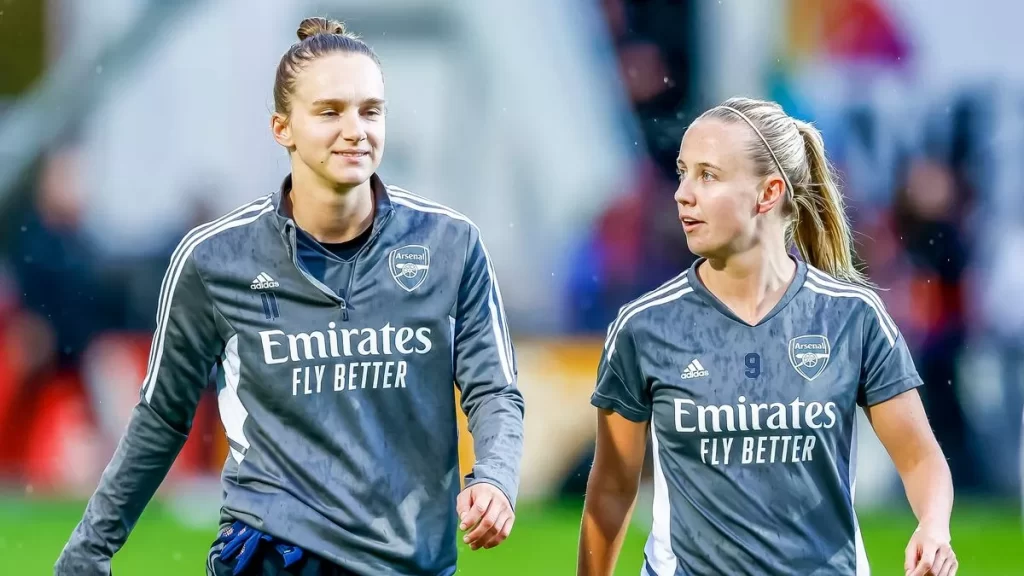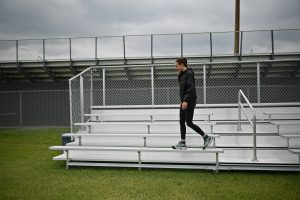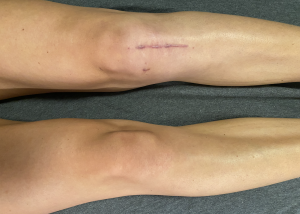The ACL Recovery process entails:
- acute knee rehabilitation
- physical milestones
- psychological readiness
- knee confidence
- strength milesteones
- return to participation and sport testing
- ongoing knee testing and maintenance in return to performance
How do you get back to sport after your anterior cruciate ligament tear and/or reconstruction? I talk about my experience and some of the Arsenal Women’s players who describe their experience.
Get an insight to two elite athlete’s ACLR rehab processes

Two Arsenal Women’s players, Beth Mead and Vivianne Miedema both had ACL tears and surgeries during their careers with Arsenal. They documented their experiences into a mini video series to show the ups and downs of the process.
The Arsenal women’s documentary series follows star forwards Vivanne Miedema and Beth Mead who both missed the World Cup for their countries and have returned to their team this season following ACLRs.
Watching Viv and Beth speak about their injuries from a very vulnerable place could be really beneficial for athletes who have just torn their ACL or just had surgery.
The caveat that always needs to be acknowledged, especially when watching elite athletes, is how each ACL tear and surgery is different. This is emphasized throughout the documentary as Vivanne and Beth are going through at slightly different times and they talk about comparison-itis.
It’s key to remember that they are professional athletes. This isn’t the group of athletes I usually treat as a physiotherapist, but they speak a lot about the community aspect and needing a team of people around you. There are 5 videos in the series which are worth a watch if you are wanting some perspective on the journey!

Episode 3 is a good listen to put all the factors together that can contribute to injury risk and what might have contributed to their own ACL tears with a panel of health professionals.
Their insight on the process and journey of what recovering from an ACL tear and surgery is really helps to lay out what each individual and athlete might be going through, mentally and physically.
Return to Sport – how long does it take?
The process is a long one, and you’ll often hear talk that recovery is 8-9 months. It might be a tough thing to hear, but that is a short timeline for truly recovering from an ACLR. Taking into account elite athletes where recovery is their job for the time being, any general population individual is recommended to only return to sport at 12 months post-op, and after having completed extensive return to sport testing along the way.
It is recommended to follow a criteria-based rehabilitation program, as I discuss above, versus just basing your progress on time. As well, research has indicated that risk of re-injury is reduced if you wait to at least 8 months post-operation, and continues to reduce each month after that. As a phsiotherapist and a person going through the ACLR rehab process, this means that the rehab can’t be rushed.
This video covers the main rehab stages during an ACLR recovery process. This can also apply to non-surgical ACL recoveries.
My Return to Sport

Up until this year (2024), I had been playing casual and recreational soccer. I was able to rest and join when I felt like it and didn’t feel like it was a major challenege. On my return return to women’s competitive soccer, I experienced a few other outcomes:
- first game back at this level and intensity without having ran since early January – I don’t recommend this! You should have a gradual build up back to the intensity that you are about to take part in
- no true progressive strength training since early last year – also wouldn’t recommend to patients! I waas traveling up until January and didn’t have a gym available
- Unable to increase practice time since I’m old now and our team doesn’t have training, last soccer exposure was last spring at much lower intensity – also don’t really recommend this! Having time and a gradual exposure to the types of movements and plays you’ll experience in a game is key
- First games – less pressure as the season was just about over and since it was indoor I could sub whenever I wanted for a break – I DO recommend this
- Knee outcome: Sore but not swollen the next day and full range of motion, noted some hip soreness where I compensated by end of game.
- Make sure to hit recovery – protein, carbs, fluids, rest. Obviously would not recommend playing back to back games anyways but wouldn’t do a plyo heavy or intensive workout today.
- Next day: Stay moving – range of motion, quad squeezes, walking – the soreness was basically gone by the end of the next day
You can read more about my process and how it feels being 2 years post op!

If you just tore your ACL, the ACL Injuries eBook is the place to start. It is like getting a physio appointment with me to ask questions but you get this ebook for life!
Have more questions? Book a 1:1 to chat about your specific injury.



